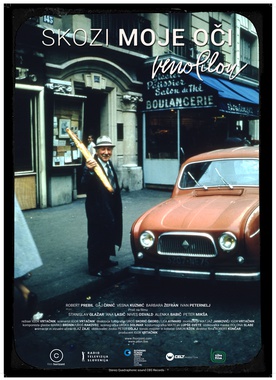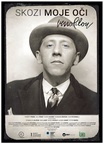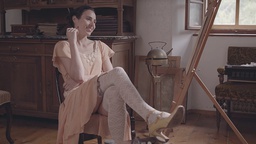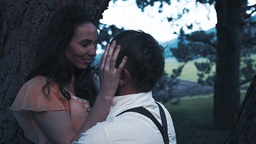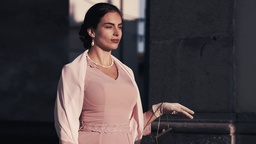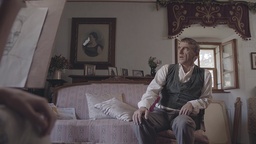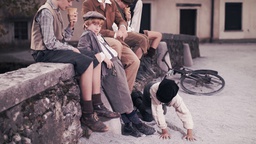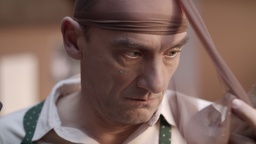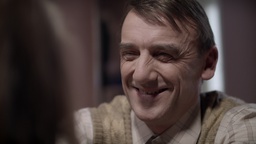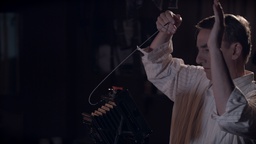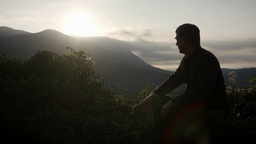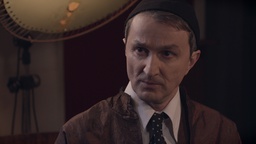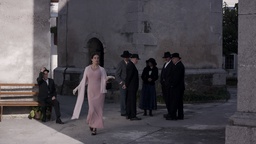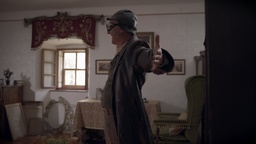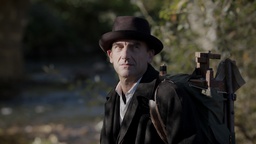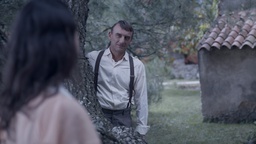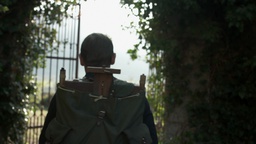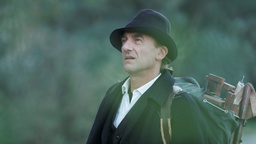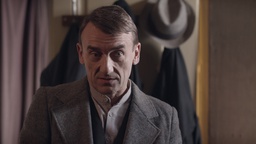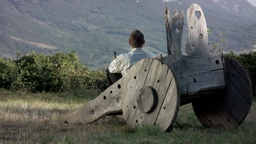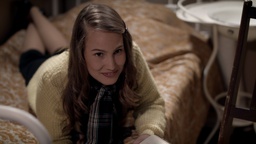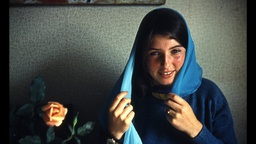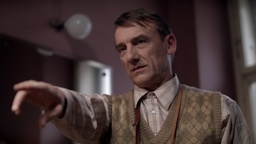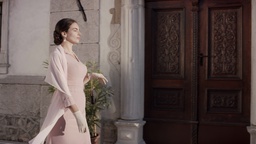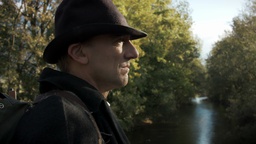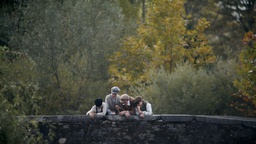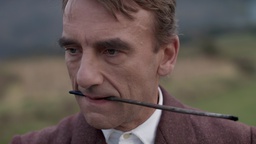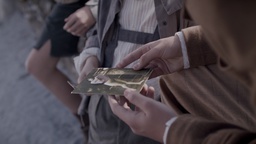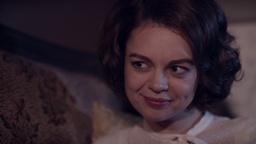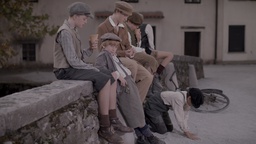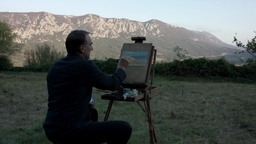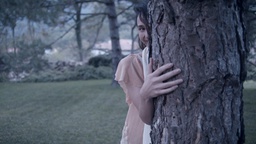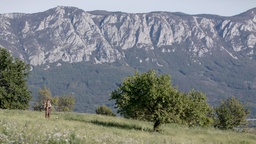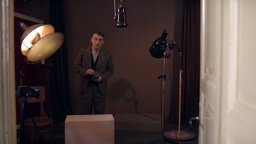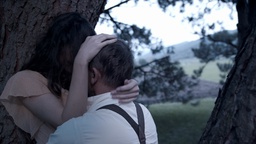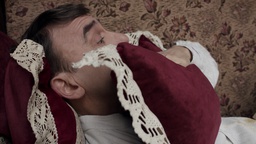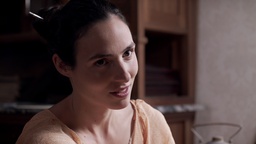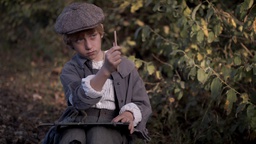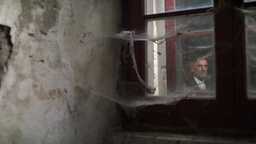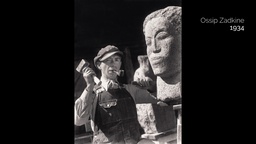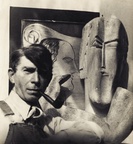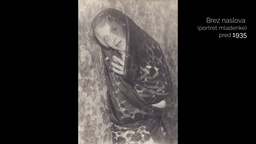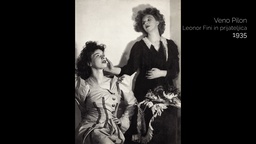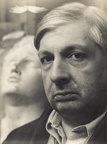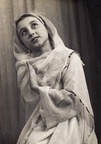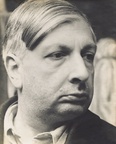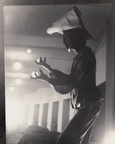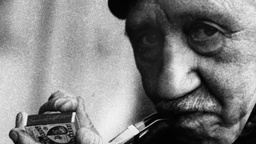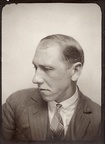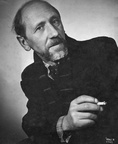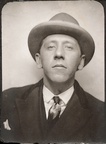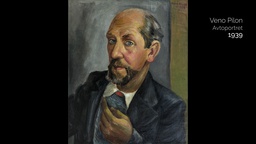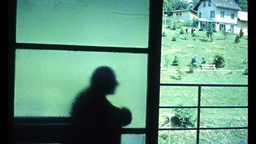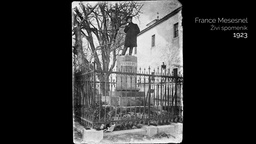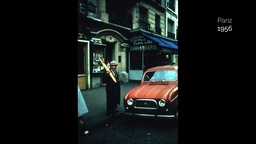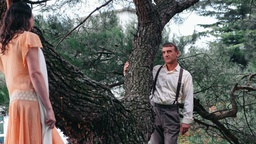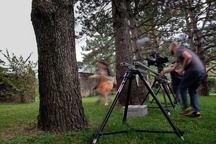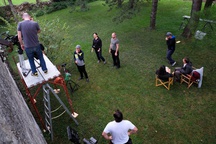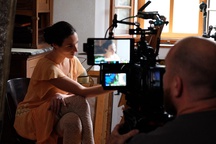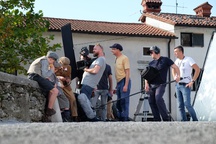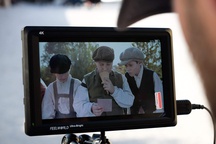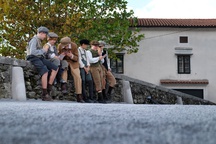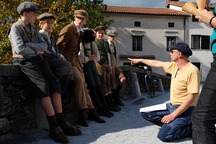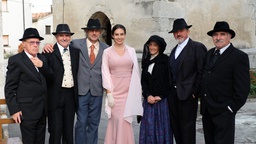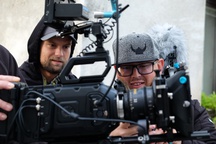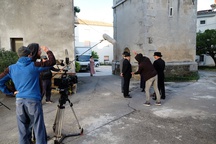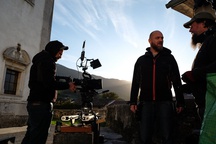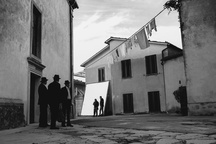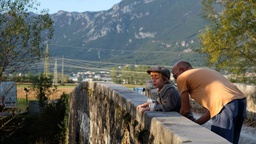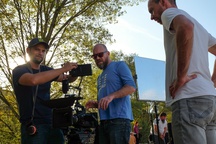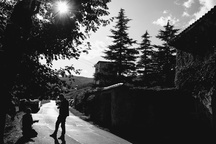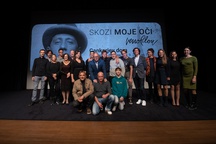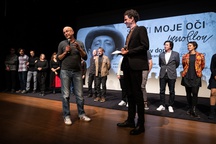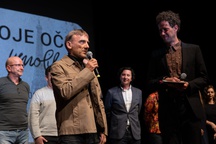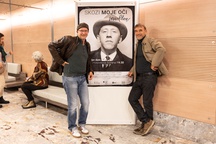Skozi moje oči
- Documentary-Fiction Feature Film
- 122' 22''
- 2022
- Slovenia
- Basic info
- Galley
- Materials
- Episode
- Cast
- Crew
- Organizations
- Music
- Awards
- Screenings
- Archival footage
- Extended data
- Financing
- Filming locations
- Trivia
- Contact the editors
Synopsis
This is a film about an observer, and a story about the Paris pulse at the turn of the century in the 1920s , which experiences the explosion of new artistic styles and becomes the epicentre of modern art. Among them is a very talented young man, Veno Pilon, who was already established and a recognised painter at home in Primorska region, in Italy at that time. There Pilon mingles with Henry Mil
This is a film about an observer, and a story about the Paris pulse at the turn of the century in the 1920s , which experiences the explosion of new artistic styles and becomes the epicentre of modern art. Among them is a very talented young man, Veno Pilon, who was already established and a recognised painter at home in Primorska region, in Italy at that time. There Pilon mingles with Henry Miller, Max Ernst, Ossip Zadkin, Giorgio de Chirico, Roland Oudot and others. Two years later, Pilon becomes one of them and writes in his diary: 'I wasn't attracted by painting anymore, since my faith in my own work was shattered. I fell back to Paris, to lose myself in the crowds and forget myself. I wanted to become anonymous… Hence I was avoiding exhibitions as well.' After his arrival in Paris, Pilon stops painting almost completely, and is instead inspired by photography. Through his portrays of the Montparnasse artists, the records of their artistic works and shots of Parisian hustle and bustle, Pilon is part of the birth of the photography, during a period when photography has reached its pinnacle. Photography becomes his bread and butter, a means for providing for his family.
One of the most famous quotations by Paul Eluard reads: 'In Paris, everybody wants to be an actor; nobody is content to be a spectator.' The very same Eluard who penned one of his long poems to one of Pilon's photographs at his first Paris exhibition in the Carrefour Art Gallery in 1934. 'This was one of the greatest recognitions of my work,' remembers Pilon. Ironically, it is exactly Pilon for whom Eluard 's quote doesn't just apply! Pilon was namely exactly that: above all an observer, a spectator, and everything else only after that. A photographer! Photography was Pilon's secret passion, a silent lover who never abandoned him and instead accompanied him all his life.
Pilon sang his song of songs with painting as well as with his mistress, photography.
Director
Cast
Director's statement
Pilon is best described with a quote by Henry Miller: “To sing you must first open your mouth. You must have a pair of lungs and a little knowledge of music. It is not necessary to have an accordion,
Pilon is best described with a quote by Henry Miller: “To sing you must first open your mouth. You must have a pair of lungs and a little knowledge of music. It is not necessary to have an accordion, or a guitar. The essential thing is to want to sing. This then is a song. I am singing.” Pilon sang the song of painting and of his hidden mistress photography.
Gallery (75)
Videos (2)
Cast
Credits order
Alphabetical order
Crew
Writing
Direction
Production
Animation
Cinematography
Music
Editing
Production design
Costume design
Make-up
Sound design
Directing department
Production department
Art department
Sound department
Camera department
Lighting department
Grip department
Casting department
Post production/editorial department
Music department
Mentoring and Consulting colaboration
Other
Organizations
production
distribution
technical services
miscellaneous
Awards
Irrelevant Awards
Screenings
Extended data
Technical data
Financing
Budget
All financial information is obtained from official sources. I.e. producers or organizations which provided the financial support.
Comitee: Rado Likon, Matevž Luzar, Mateja Valentinčič, Igor Prassel (alternate) Explication
Dokumentarno igrani film o prezrtem slovenskem umetniku, slikarju in fotografu Venu Pilonu, ki je večino svojega življenja preživel v Parizu, odlikuje režiserjeva podrobna raziskava umetnikovega življenja in dela ter študiozna priprava lokacij. Zgodovinsko dokumentarni portret Pilona kot fotografa in svetovljana, ki se je v 20-ih in 30-ih letih 20. stoletja družil s pariškimi avantgardisti, danes svetovno znanimi imeni moderne umetnosti, se sprašuje po razlogih Pilonovega zdrsa v obskurnost. Pilonova zanimiva osebnost in biografija skupaj z bogatim arhivskim gradivom ponuja več kot faktično dokumentaristični biografski film z relevantno kulturno temo nacionalnega pomena. Mnogo njegovih fotografij je najdenih šele v zadnjem desetletju, razstava Evropa stoletje avantgarde 1994 v Bonnu pa ga postavi ob bok pomembnim evropskim fotografom, kar kaže na univerzalnost in relevantnost teme, ob tem da beležimo 100 let od Pilonovega začetka ustvarjanja in 50 let od njegove vrnitve iz tujine.
Rekonstrukcija Pilonovega življenja poteka skozi igrane sekvence, ki od 1914-1925 v rodni Ajdovščini ujamejo njegova burna mladostna leta znotraj ognjevitega goriškega kroga (Stano Kosovel, Marij Kogoj, Spazzapan Spasal, Avgust Černigoj), ter njegovo koloraturno krajinarsko slikarsko obdobje in odnos do družine, obdobje od 1925 do 1950 v Parizu pa znotraj boheme, saj Pilonovo fotografsko dokumentarno beleženje vrveža Pariza sredi preloma stoletja vsebuje portretiranje najpomembnejših umetnikov Ecole de Paris. Narativna zgodba je pripovedovana skozi Pilonove oči skozi arhivski material slike in predvsem fotografije, režijska vizija pa obljublja filmsko atmosfero in pokrajino, posneto predvsem v naravni svetlobi z dolgimi jutranjimi in večernimi sencami v totalih, s čimer se režiser želi vizualno približati slikarju in fotografu.
Comitee: Žanina Mirčevska, Ida Weiss, Jaroslav Skrušny, Slobodan Maksimović (alternate)
Contact the editors
If you need to get in touch, please use the form below. We will be happy to hear from you.

